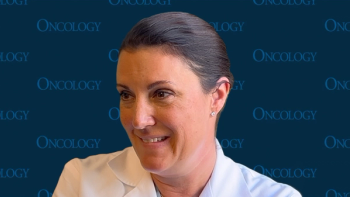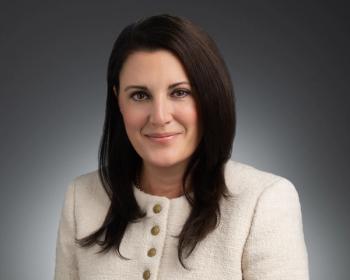
- ONCOLOGY Vol 14 No 8
- Volume 14
- Issue 8
Docetaxel Plus Tamoxifen
Results of the GEPARDO Trial: A Phase IIB Study Comparing the Combination of Dose-Intensified Doxorubicin and Docetaxel With or Without Tamoxifen in Patients With Operable Breast Cancer
ABSTRACT: Results of the GEPARDO Trial: A Phase IIB Study Comparing the Combination of Dose-Intensified Doxorubicin and Docetaxel With or Without Tamoxifen in Patients With Operable Breast Cancer
Between April 1998 and June 1999 the German Adjuvant Breast Cancer Group (GABG) enrolled 250 patients from 56 centers, with core-cut biopsyconfirmed unilateral bidimensional measurable operable breast cancer (T > 3 cm, N0-2, M0), into the GEPARDO (German Preoperative Adriamycin Docetaxel) trial. Patients were randomized to receive four cycles of dose-intensified doxorubicin (50 mg/m²) and docetaxel (Taxotere) (75 mg/m²) every 14 days, including granulocyte colony-stimulating factor (G-CSF, filgrastim [Neupogen]) support on days 610, with or without tamoxifen (Nolvadex) 30 mg/d, as primary systemic therapy.
The aim was to investigate the tamoxifen-induced drug resistance modulating effect on pathologic complete response (pCR = no invasive or in situ viable tumor cells). After surgery, all patients were given tamoxifen 30 mg/d as an adjuvant, planned for 5 years. Tumor size and shrinkage were assessed at study entry clinically, by mammography, ultrasound, and optionally by MRI. Before surgery the method that revealed optimal tumor assessment had to be repeated.
A total of 122 patients were randomized to receive doxorubicin/docetaxel plus tamoxifen, and 128 to receive doxorubicin/docetaxel alone. Median age at entry was 48 years (range: 2767 years). Tumor size was > 4 cm by palpation in 41% of patients; 51% were clinically node negative. Estrogen-receptor status could be analyzed in 196 patients, 59% of whom were positive. These factors were well balanced between the two treatment arms. 247 patients were evaluable for the extent of surgery and for tumor response.
Breast-conserving surgery was performed in 68.6% (83/121 patients) with doxorubicin/docetaxel plus tamoxifen and in 69.8% (88/126) with doxorubicin/docetaxel alone (95% CI for difference: -12.8%, 10.3%). The rate of pCR was 9.1% (11/121) with doxorubicin/docetaxel plus tamoxifen and 10.3% (13/126) with doxorubicin/docetaxel (95% CI for difference: -8.6%, 6.2%).
CONCLUSION: Dose-intensified preoperative doxorubicin/docetaxel with or without tamoxifen achieved a high rate of breast-conserving surgery and a good pCR rate, but showed no difference in the two treatment arms. The regimen is feasible with moderate toxicity.
Articles in this issue
over 25 years ago
Commentary on Abstract #280over 25 years ago
Commentary on Abstract #527over 25 years ago
Commentary on Abstracts #986 and #1015over 25 years ago
Commentary on Abstract #1916over 25 years ago
Commentary on Abstracts #341, #347, and #333over 25 years ago
Commentary on Abstracts #407 and #424over 25 years ago
Commentary on Abstracts #349 and #1259over 25 years ago
Commentary on Abstracts #317 and #322over 25 years ago
Commentary on Abstracts #254 and #330over 25 years ago
Commentary on Abstract #336Newsletter
Stay up to date on recent advances in the multidisciplinary approach to cancer.


















































































